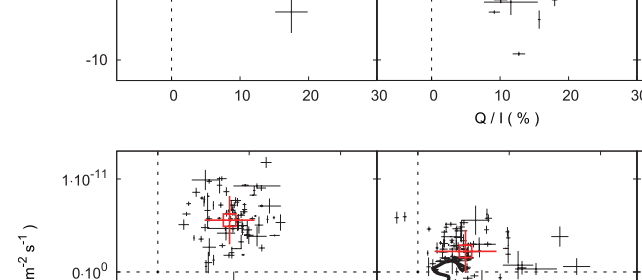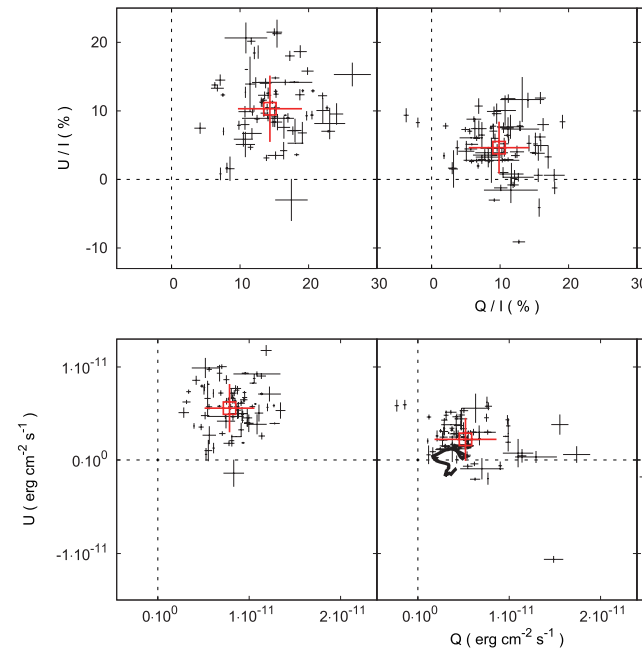Photopolarimetric Monitoring of the Blazar BL Lac in the Optical and Near-Infrared Bands: Decay of the Long-Lived Component

K. Sakimoto, M. Uemura, M. Sasada, K. S. Kawabata, Y. Fukazawa, et al., “Photopolarimetric Monitoring of the Blazar BL Lac in the Optical and Near-Infrared Bands: Decay of the Long-Lived Component”, PASJ, vol. 65, p. 35
We report on the results of optical-near-infrared photopolarimetric observations of BL Lac conducted from 2008 to 2011. Our observations are consistent with past studies in which the behavior of the polarization of BL Lac could be understood with two components: short flares whose polarization angles randomly change, and a long-lived component. In addition, we detected a gradually decreasing trend in the total flux, the polarized flux, and the polarization degree without a large variation in the polarization angle from 2008 to mid-2009. These results suggest that the long-lived component decayed from 2008 to mid-2009. We propose that the long-lived component is not stationary, but is probably variable with a time-scale of years. We found no change in the activity of the short flares in 2008 and 2009, when the long-lived component was strong and weak, respectively. Furthermore, there were no clear differences in the mean color and the distribution of the polarization angle of the short flares from 2008 to 2009. These facts indicate that the emitting region of the long-term component was physically disconnected to that of the short flares. The color of the long-term component was bluer than that of the short flares, indicating a higher synchrotron peak-frequency. This could be due to a low efficiency of synchrotron and/or Compton cooling in the emitting region of the long-lived component. The long-term component is possibly originated from a relatively downstream region in the jet where the electron density is low, or the external radiation field is weak.
